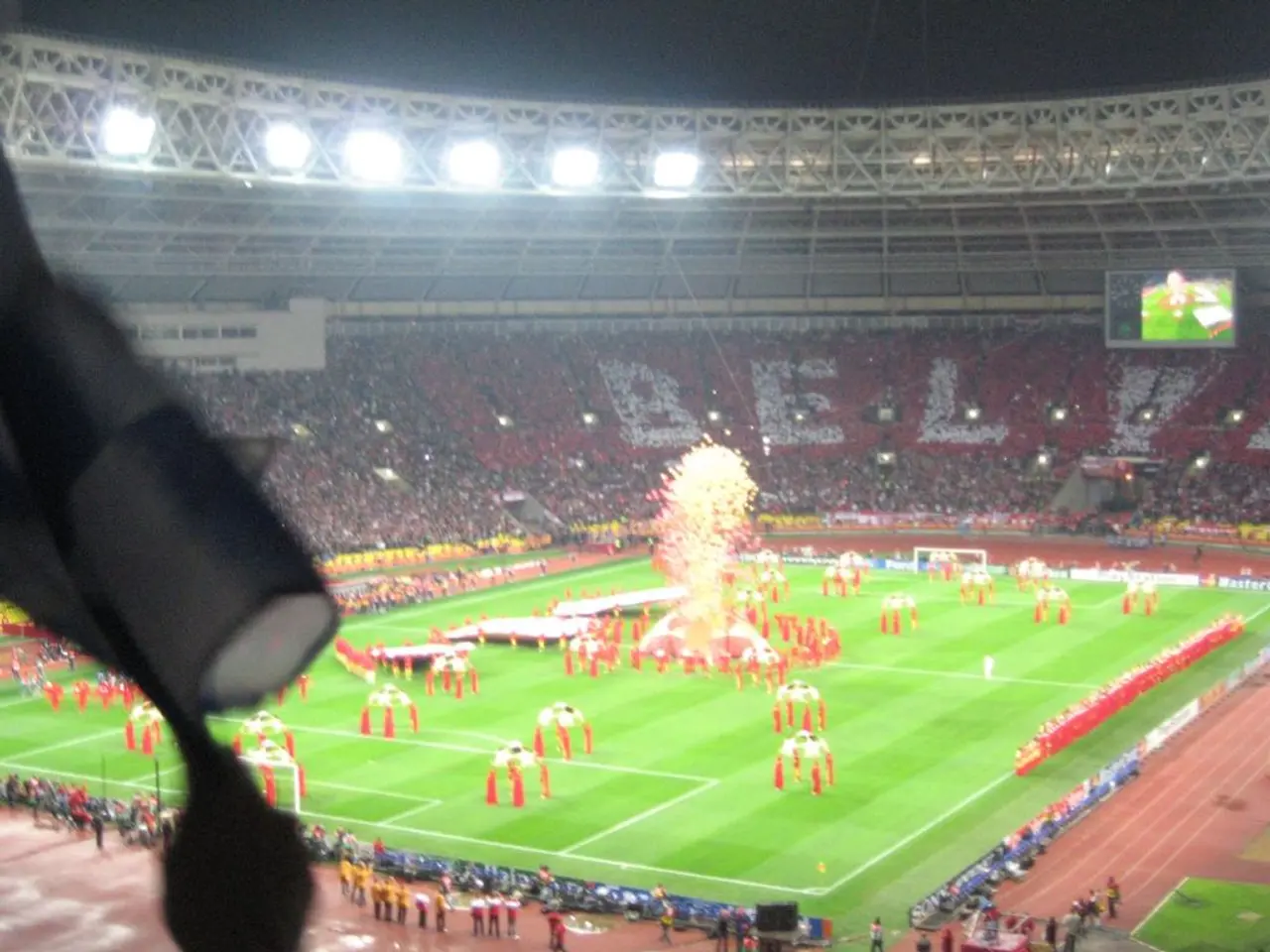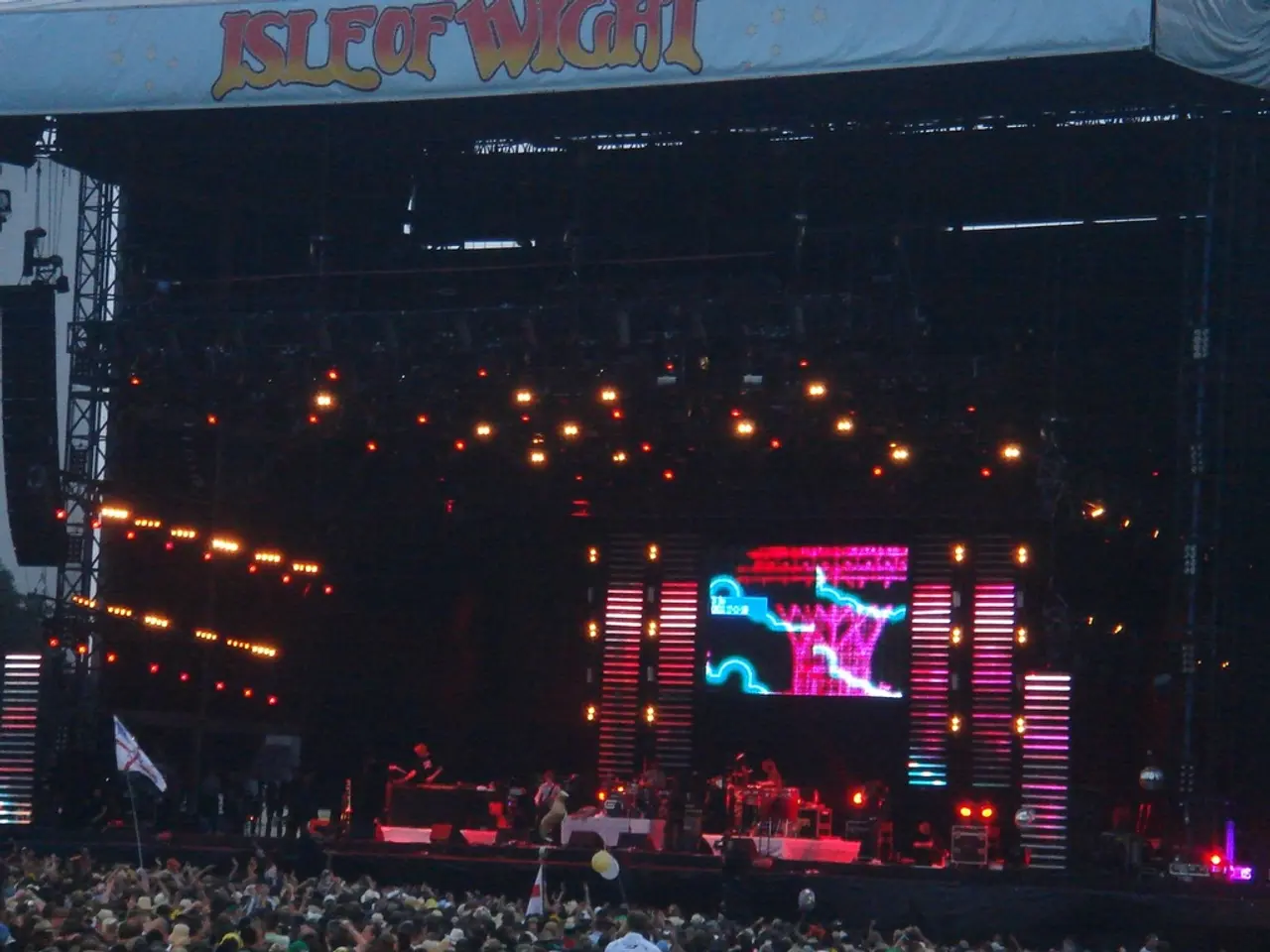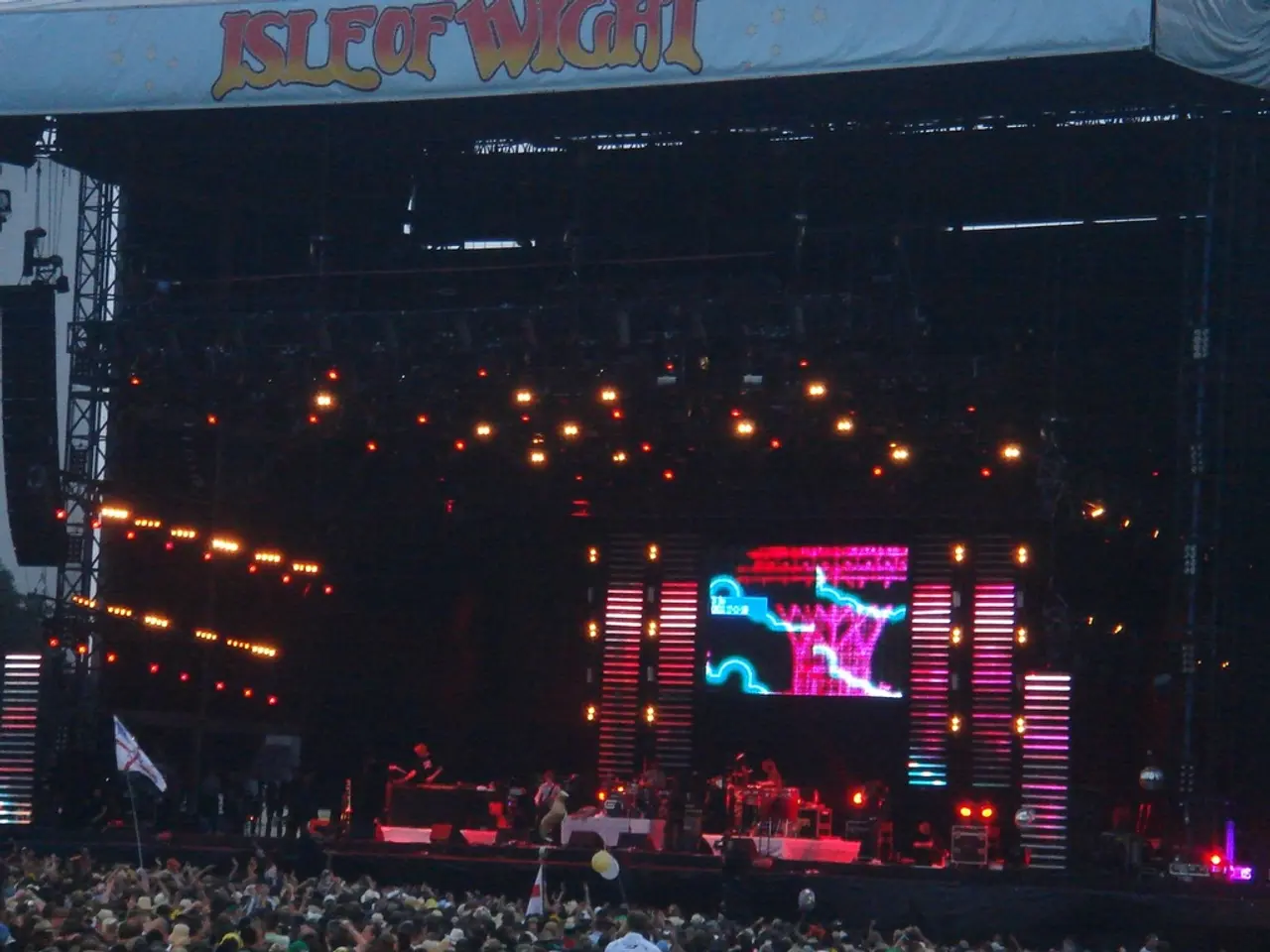Oasis' performance at Murrayfield in Edinburgh surpasses Taylor Swift's for the title of the concert with the most ground-shattering energy
In a remarkable turn of events, the iconic British band Oasis has once again made history at Edinburgh's Murrayfield Stadium. Their comeback tour this weekend has seen them surpass their own seismic record set back in 2009, according to data from the British Geological Survey (BGS).
During their 2009 performance, the peak energy reading was recorded around 8.30pm, correlating with the time the band first took the stage and performed 'Rock 'N' Roll Star'. The peak earthshaking power of the Oasis gig in 2009 was a staggering 215.06kW, enough to power around 30 scooters from their 'Be Here Now' album cover. This level was significantly higher than that of other major acts over the same period.
However, recent data from 2025 shows that an Oasis gig at Murrayfield later that year produced an even higher seismic peak power reading of 261 kW. The 2025 concerts also featured strong readings on other days (206 kW and 160 kW), indicating very energetic crowd participation.
The seismic power output of a concert at Murrayfield Stadium primarily depends on the movement of fans jumping and dancing in sync with the music. Factors like how energetic the crowd is, the height of their jumps, and their combined weight play a significant role. It is not driven by the volume of the band or crowd noise.
The 2009 Oasis concert was the most seismic for 20 years, demonstrating exceptional crowd energy and engagement. However, the band's own 2025 return surpassed that seismic impact.
Here's a breakdown of the peak seismic power outputs for some notable performances at Murrayfield Stadium over the past 20 years:
| Performance Year | Artist | Peak Seismic Power Output (kW) | Notes | |------------------|-----------------------|-------------------------------|---------------------------------| | 2004 | Red Hot Chili Peppers | 106.87 | Prior record before Oasis 2009 | | 2009 | Oasis | 215 | Highest until 2025 | | 2011 | Kings of Leon | Less than 215 | Below Oasis 2009 | | 2024 | Taylor Swift | Less than 215 | Below Oasis 2009 | | 2025 | Oasis (Live '25) | 261 | New highest peak power |
Improving the understanding of historical earthquakes is an important part of BGS research in trying to understand and mitigate the seismic risk around the country. The BGS keeps an archive of continuous ground motion recordings from seismic sensors around the UK, dating back several decades.
BGS seismologist, Callum Harrison, stated that it is "certainly possible" the band could top their 2009 performance, with the main contributing factors being the crowd's energy, jumping height, and speed.
Other performances at Murrayfield Stadium over the years have also generated impressive seismic readings. For instance, Beyonce's 2023 gig had a peak power of 29.31kW, while Robbie Williams' 2025 gig had a peak power of 14.18kW. The Red Hot Chili Peppers' 2004 gig was the second most seismically powerful, with a peak power of 106.87kW. The Spice Girls' 2019 gig had a peak power of 10.63kW, and Harry Styles' 2023 gig had a peak power of 65.38kW.
As Oasis prepares to perform at Murrayfield Stadium this weekend, fans can expect another "shakermaker". The band will perform on Friday, Saturday, and Tuesday, potentially causing another seismic event worthy of the BGS's attention.
The 2025 Oasis concerts at Murrayfield Stadium not only showed stronger seismic readings compared to their 2009 performance but also surpassed the readings of other major acts like Taylor Swift, Kings of Leon, and Red Hot Chili Peppers in the past 20 years.
The energetic crowd participation during music events at Murrayfield Stadium, such as during Oasis' performances, can generate seismic power output that rivals entertainment events like Beyonce's gig or sports events like Robbie Williams' performance.








